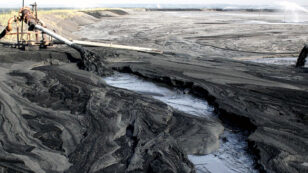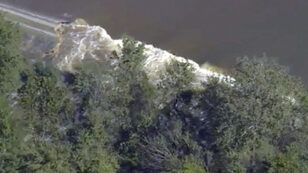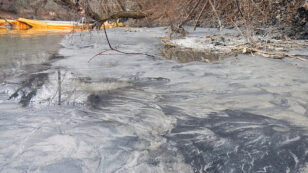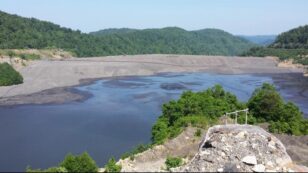
Environmental Toxins 101: Everything You Need to Know
What exactly are these environmental toxins, and how can we limit our exposure and who is helping to drive systems-level change?

What exactly are these environmental toxins, and how can we limit our exposure and who is helping to drive systems-level change?

Duke Energy—the nation’s largest electric company—is being criticized for trying to pass along its coal ash cleanup efforts to customers in the form of rate hikes. The Associated Press reports that this is the first time the $59 billion electricity company has sought permission to have North Carolina consumers pay part of its costs of […]

The record-breaking flood of the Neuse River inundated three inactive coal ash ponds for five days last week from the Duke Energy H.F. Lee facility, 10 miles upstream of Goldsboro, North Carolina. The flooded ponds are unlined and uncovered, containing more than 1 million tons of coal ash spread over more than 170 acres in […]

Waterkeeper Alliance and Sound Rivers have discovered a large coal ash spill into the Neuse River from the Duke Energy H.F. Lee facility, 10 miles upstream of Goldsboro, North Carolina. A substantial but undetermined amount of coal ash was found floating on the surface of the river in a layer over one inch thick. See […]

The embarrassment continues for Duke Energy who is dealing with the breach of a 1.2-billion-gallon cooling pond dam at its H.F. Lee plant due to flooding from Hurricane Matthew. It all began Wednesday morning when Duke Energy issued a statement claiming that the “ash basin and cooling pond dams across the state continue to operate […]

[This breaking news is an update to a post earlier today on EcoWatch: Millions of Chickens Feared Dead at Factory Farms in Wake of Hurricane Matthew] Waterkeeper Alliance and Upper Neuse Riverkeeper are responding to and documenting the breach of a 1.2-billion-gallon cooling pond dam at Duke Energy’s H.F. Lee plant. The breach occurred today […]

Norway’s central bank announced on Wednesday that the Norwegian Government’s Pension Fund, worth $900 billion, will no longer invest in Duke Energy. This decision is the result of an investigation by the Council on Ethics for the pension fund, which found that Duke Energy’s failure to adequately respond to its leaking coal ash impoundments in […]

By Heather Moyer This is part 2 (read part 1) on my visit to see mountaintop removal coal mining sites in West Virginia with Coal River Mountain Watch. Junior Walk and I are standing where a mountain used to be. We’re on a pile of rocks surrounded by even more piles of rocks and boulders. […]

By Deirdre Fulton After being sued for $30 million by a corporate landfill owner for “speaking their truth in order to protect their community,” four residents of Uniontown, Alabama—a poor, predominantly Black town with a median per capita income of around $8,000—are fighting back. L-R, Benjamin Eaton, Mary B. Schaeffer, Esther Calhoun and Ellis B. […]